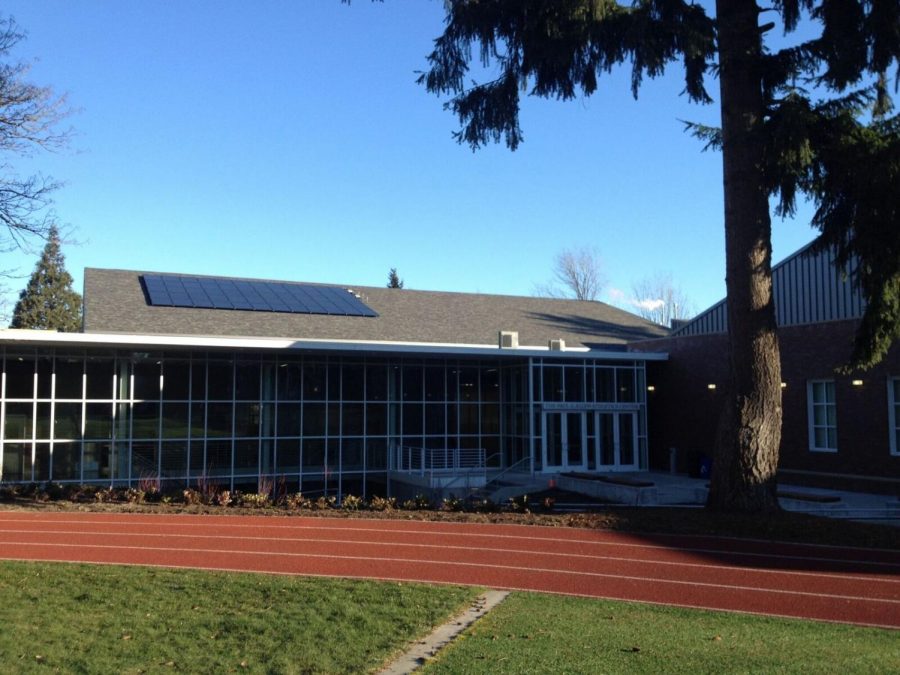Solar Panels at Lakeside: Sustainability or Lack Thereof?
There are 72 glittering, modern, marvelously blue solar panels on top of Allen Gates Athletic Center and nobody seems to know what they do. This article doesn’t even know what they do.
So why haven’t Lakesiders learned about them? What other kinds of sustainability initiatives does Lakeside have? What is our role in creating a green future and preserving our environment? For this story, Tatler examined Lakeside’s environmental impact, carbon footprint, and sustainability initiatives.
The United States solar panel industry has experienced an average growth of 50% per year over the last decade and is expected to reach $22.9 billion by 2025. Aided by government tax credits and technological advances that made solar energy more affordable, the cost of solar panels has been lowered by over 70% over the past decade. In addition, the industry’s share of the overall energy market has been steadily increasing, and 100 gigawatts of solar power are projected to be deployed by 2021 (Solar Energy Industries Association).
According to Dan Dawkins, Lakeside’s Director of Facilities, Lakeside has 72 solar panels which were installed in 2013. They are made of crystalline silicon, and the panels consist of two layers of silicon, one negatively charged and the other positively charged. They work by taking in the sun’s rays, knocking the electrons off the silicon, and using those negatively charged free electrons to create an electric voltage that can be transferred or channeled without producing environmentally damaging waste like traditional fossil fuels (NW Wind and Solar). The entire project cost around $135,000. Of that amount, $3,167.90 was returned in rebates to the school in 2014, 2015, and 2018. No rebates were received in 2016 and 2017. The company that manufactured Lakeside’s panels, NW Wind and Solar, also produces solar panels and other sustainable energy systems for many other Seattle schools.
The solar panels were born from the activism of a former student, Dawit W. ’14. As a 10th grade student government representative, Dawit did a project about what his fellow 10th graders wanted to see. Many respondents asked for solar panels, so he took this idea to Ms. Maiorano. She encouraged him to conduct research and pursue the idea further. It was established at the beginning, however, that this project would probably not come to fruition, but it would be a good experience for Dawit to learn from. He did his research and talked with people in the administrators about potential costs, savings, efficiencies, and power needs. Later, he presented a proposal in front of a group of administrators and architects who were overseeing the reconstruction of the athletics center at the time. Although Dawit went into the presentation with low expectations, an anonymous board member was very moved by his presentation. A few days later, funding for the project was secured and construction began on the panels we currently see atop the Paul G. Allen Athletics Center.
In the wake of urgent signs of climate change and increased public awareness of our environmental impact, this inclusion of solar panels on Lakeside’s campus can be seen as part of a growing movement to incorporate green initiatives and sustainability into daily life. While researching this story, however, it was difficult to find information on other green initiatives for Lakeside or reports of Lakeside’s carbon footprint. Dozens of emails and interviews with various department heads and administrators yielded only some of the necessary statistics for this article (for example, statistics on the energy production of the panels are missing), which hopefully indicates a lack of transparency rather than enthusiasm.
We know Lakeside students want to go green–their passion and activism was demonstrated a month ago at the climate strike. Now, it’s a matter of getting institutions to do the same. That begins with increasing transparency and improving sustainability with their new information. Dawit’s story highlights that it is fully within our capabilities to make a difference in what we believe in, no matter how young. Indeed, it is necessary.
From A to Z, AZ's got it all. Especially existential boredom. Recently, Aaron cried while listening to Wagner's "Tannhäuser" on YouTube, the most he's...

